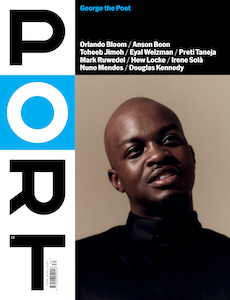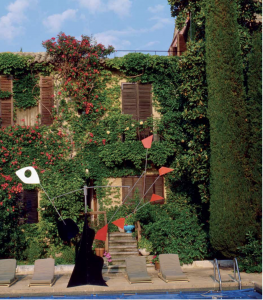Investigating the Church of the Autostrada

Florence is solid, immovable; its artworks and architecture have been in the same positions for hundreds of years, and will probably rest at those coordinates far into the future. The fixity is suggested by the glacial light, guided by it perhaps. Both in winter and summer a slight haze takes the edge off temporary, superficial details (the utilitarian markers of passing time: lampposts, adverts, bins, tv aerials), while at the same time the constant clarity of the light exaggerates the apparently permanent identity of every object.
Hiding out on the outskirts of Florence, amidst its more temporary landscape of IKEA warehouses and tractor showrooms, there is, beside a motorway service station, Giovanni Michelucci’s San Giovanni Battista. More commonly known as Church of the Autostrada, it was commissioned by the Highways Construction Co and opened in 1964 in memory of the 164 workers who died constructing the Autostrada A1 (or Freeway of the Sun).
A few years ago the building came up in a conversation I was having with Jonathan Hill, a professor at the Bartlett School of Architecture. He explained that Michelucci’s childhood was spent in the family’s metalwork studio in Pistoia and how he had retained the connection to traditional craft throughout his career, mixing eclectically the more radical ideas of his time, such as expressionist and High-tech architecture, with an understanding that buildings can be born from an appreciation of nature and everyday life.
The professor casually mentioned that nobody really writes about Michelucci’s Church of the Autostrada, simply because they don’t know what to say; that, while working on it, the architect went through numerous structural engineers, with one committing suicide from the complexity of the project. Since that conversation, I had often daydreamed about this thing people tried and failed to describe, a complete architectural grotesque, and I became obsessed with the idea of going to visit it for myself.
*
Under a cliché of Tuscan blue sky, the Fs 5 bus from Florence passed smoothly through leafy suburbs and emerged at the landscape of concrete horizons that I had flown over just a few hours previously. I was dropped off at a truck stop running parallel to a noisy dual carriageway. Some blurry eyed drivers got out of their cabs and were unimpressed by my questions and gestures referring to churches. Over their shrugging shoulders and mouths loosely holding cigarettes, I saw it in the distance, the church’s roof emerging from the flattened landscape like a huge creaking iceberg carved into intersecting arcs by wind.
It looked both out of place and distinctly of the place. As I walked along the grass verge next to the road with drivers honking their horns and slowing down to offer me lifts, I noticed the building’s green copper outline perhaps looked more like a wave, then as I got closer a ruined tractor or a collapsed cow shed. Or, to use the symbolism of hard shoulders, its jutting, angular volumes appeared like sunlight glinting off an inside-out crisp packet, making it look enormous. It was blurred and shifting, alive in illusiveness form.

I came down from the motorway onto a backroad and progressed alongside speeding police cars and motorbikes. I continued under a bridge that led into the shadow of the motorway from which the church takes its nickname, Autostrada A1, and I was, quicker than I expected, at the foot of the church.
The architect wanted to create a simple tent supported by sticks, suggesting nomadic forms of living, a place of meeting and travel, capturing “the transit of mankind opposed to their definite dwelling upon the Earth”. It is then an intentionally difficult building to pin down, and equally evasive when attempts are made to position it into pre-existing architectural categories.
As I got closer, I could see that the church had the dynamism and impossible angles found in Italian futurist paintings, all set down on a solid bed of Tuscan vernacular architecture. It seemed constantly at breaking point, tethering the upper parts of the building to the ground. Michelucci used stone in many of his buildings, and here he employed stone-dressers from all of the Italian regions, specifying that they cut the stones according to their local traditions. A sense of being pulled into different geographies and places was carved into the stone with which the church was constructed.
While I waited for the weary congregation to finish their Sunday service, I walked the undulating path that wrapped around the peripheries of the building through a grove of olive trees. Without a distinct front or back, or even easily discernible sides, the forms of the church kept shifting as I walked, giving the impression with each step that it was many buildings colliding together in different formations.
Inside, I came to a rectangular box, more serene than what I had seen so far, leading into a small labyrinth that made me turn back on myself, before a narrow dark passage opened out beneath the imposing reversed barrel vault that plunged down into the nave. Thoughts of waves returned and of swimming below them, the struts cutting across the space brought to the mind being under a boat’s hull while it is under construction.
Church ceilings usually direct collective contemplation away from the building itself to a more heavenly plane above the clouds. This one, however, redirected everything back to the interior, back to individual contemplation of the self. The light entering the interior, rather than being high up and placing the congregation in submission to some kind of divine presence, was struggling to push through the dark. The straight aisle leading from darkness at the rear of the church to the light of the altar was missing. In its place seating was spread sporadically through the interior, and a flood of marble floor tiles seemed to push me in unexpected directions. At the western edge I found a helter skelter ramp up to the baptistery, something that would be more at home in a multi-storey car park.

The Church of the Autostrada is located at a point of transit, but is also in a state of transit itself, a “walking church”, as the architect described it to his brother, Renzo. Rather than adhering to Italian fixity, it is in an apparent state of movement, capturing the limbo of travelling by car. If traditional churches mimic the slow, linear procession of walking pilgrims, then Michelucci’s church is the built equivalent of being on the road: experience cut by speed into windscreen and rear-view mirror fragments. To me it all seemed fraught.
Attempting to find the exit in a gallery of bas-reliefs depicting martyrs, I couldn’t think of any other country that would have a church dedicated to the motorways and the people that travel along them. They built the first one in the world, Autostrada dei Laghi, and are synonymous with Fiat, Alfa Romeo and many other iconic manufacturers. The church’s municipality, Campi Bisenzio, is where one of the very first internal combustion engines was built. There is a reason so many coffee machines look like car parts.
*
The 1950s saw chronic under-employment in the south of Italy. The soil was of poor quality and after grain markets were deregulated, prices plummeted. For rural populations in the Mezzogiorno, there was no future. At the same time, the Italian post-war economic ‘miracle’ meant there were jobs in the vast automotive factories of the rapidly industrialising north. Between 1951 and 1971, nine million people migrated from rural to industrial areas in Italy. They often arrived in the big cities with nothing and were forced to live in train station waiting rooms or on relatives’ floors. They worked double shifts in factories that offered treacherous conditions; repetitive tasks that resulted in deformities, serious injury and death.
As Michelucci was designing and realising the church between 1960 and1964, tensions were building in the automative factories, and by 1969 workers from the south on the assembly lines of the north began revolting in waves of violent strikes. Their revolt was an all-out assault on their own exploitation. They wanted everything, as their placard slogan and shop floor chant famously expressed: Vogliamo Tutto!

The church’s fitful atmosphere captures something of their struggle. The Autostrada A1 runs 754 km from Naples to Milan, roughly demarcating their migration from south to north, and the church is on the midpoint of that journey, the point where the Apennine Mountains would have cut off the southern sun for the hopeful workers.
I stood at the side of the road to have one last look before I made the tricky walk back to the truck stop where I had begun my visit. I wondered whether there would even be a bus into town on that Sunday in the midst of a transport workers’ strike. I already knew that if I were to come back to this place it would never look the same again. I wondered what I was looking at.
In her essay ‘Bureaucrats’ (1976), on the California Department of Transportation, Joan Didion describes driving on freeways as secular communion, a state of heightened mystical awareness: “Actual participation requires a total surrender, a concentration so intense as to seem a kind of narcosis, a rapture-of-the-freeway. The mind goes clean. The rhythm takes over. A distortion of time occurs. The same distortion that characterizes the instant before an accident.”
That is what I was looking at. I was surrounded by lines of movements; flight paths, railway tracks, roads of every type, overhead power lines, gliding birds, pollen on the wind. They outlined the church, which was not one singular place, but a succession of places all in the same location – the view through the windscreen. It was infinite unfurling roads wrapped up in a parcel of heightened mystical awareness. It was distinctly embedded in this world by a pent-up energy that was seemingly in solidarity with the sacrifices that went into creating it.
Church of San Giovanni Battista sketches by Giovanni Michelucci. Courtesy Archivio Giovanni Michelucci – Serie disegn

This article is taken from Port issue 30. To continue reading, buy the issue or subscribe here




